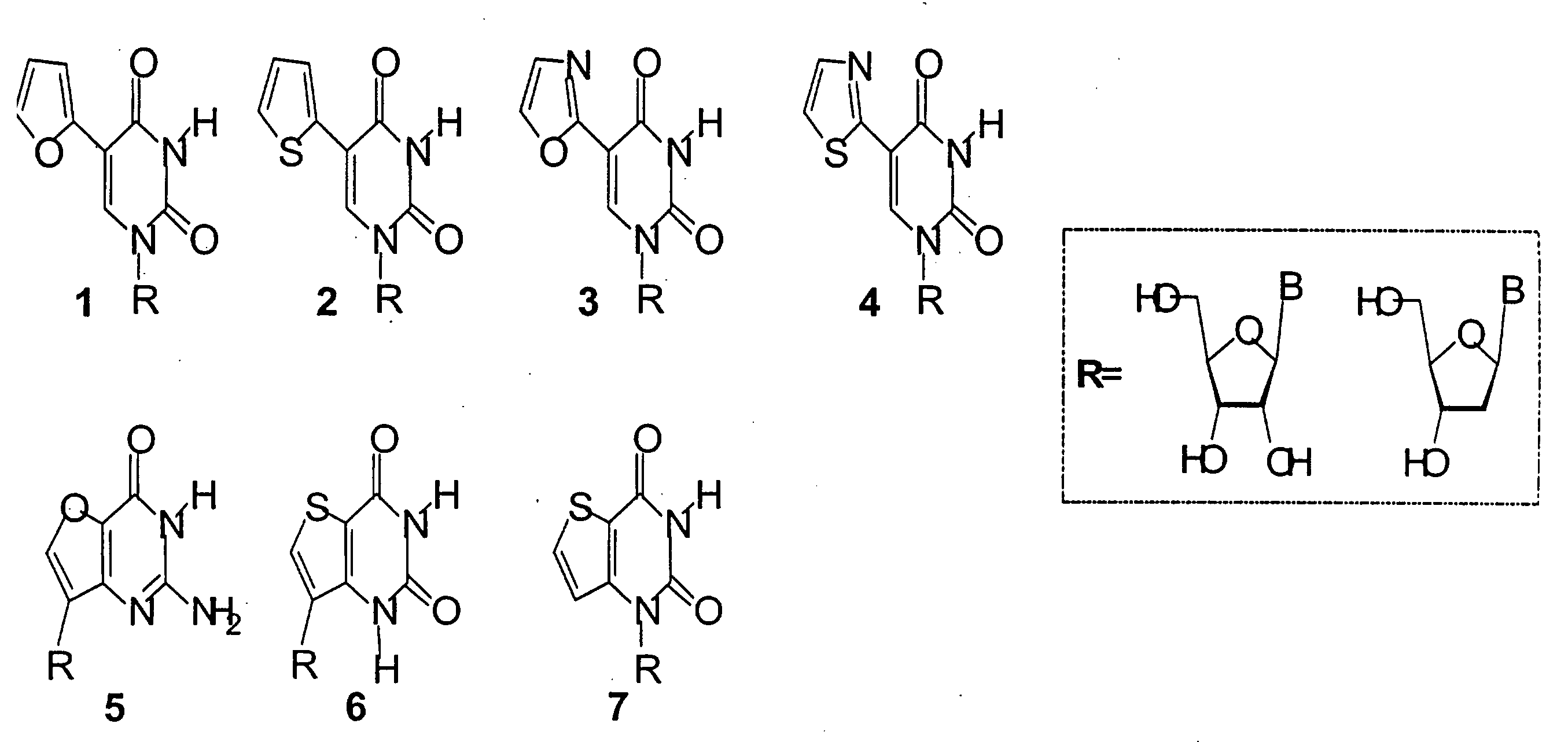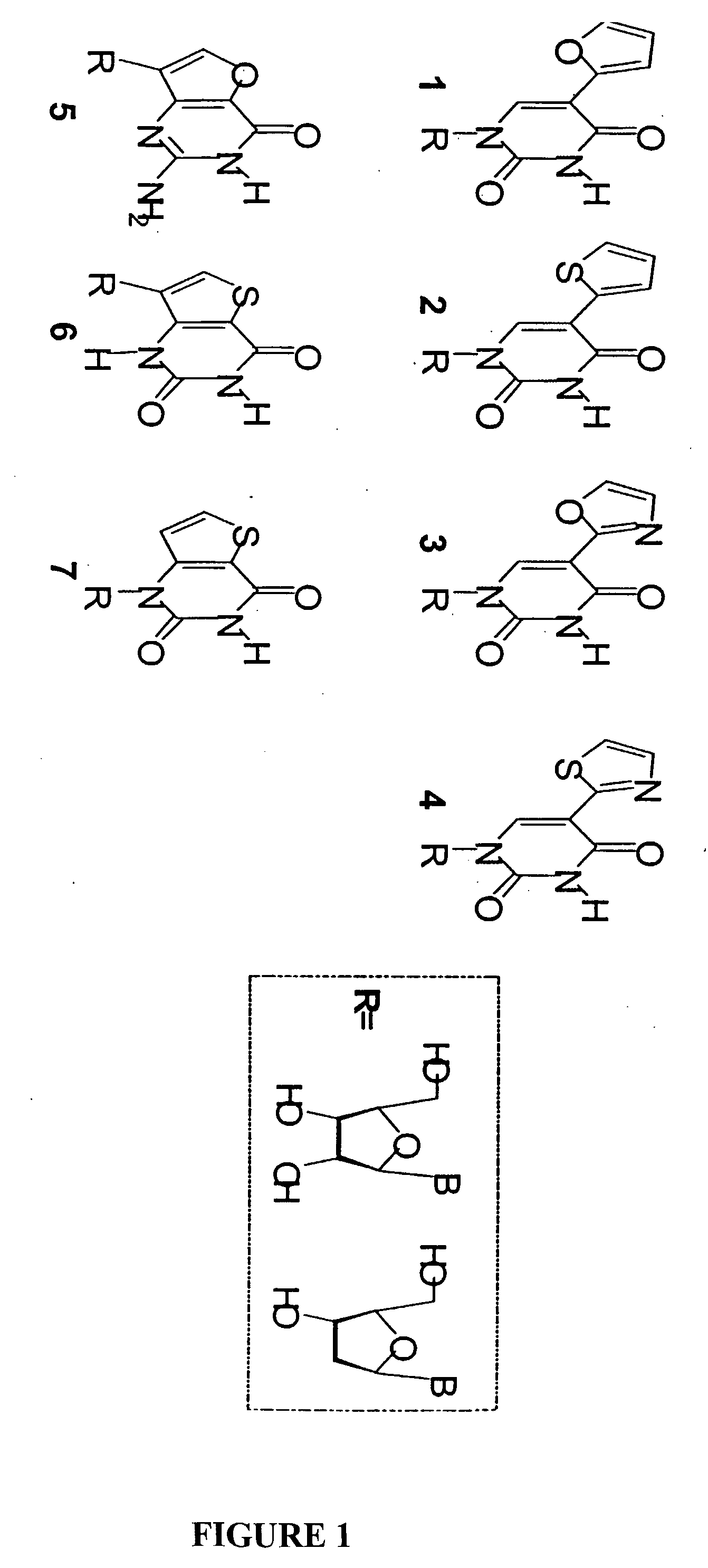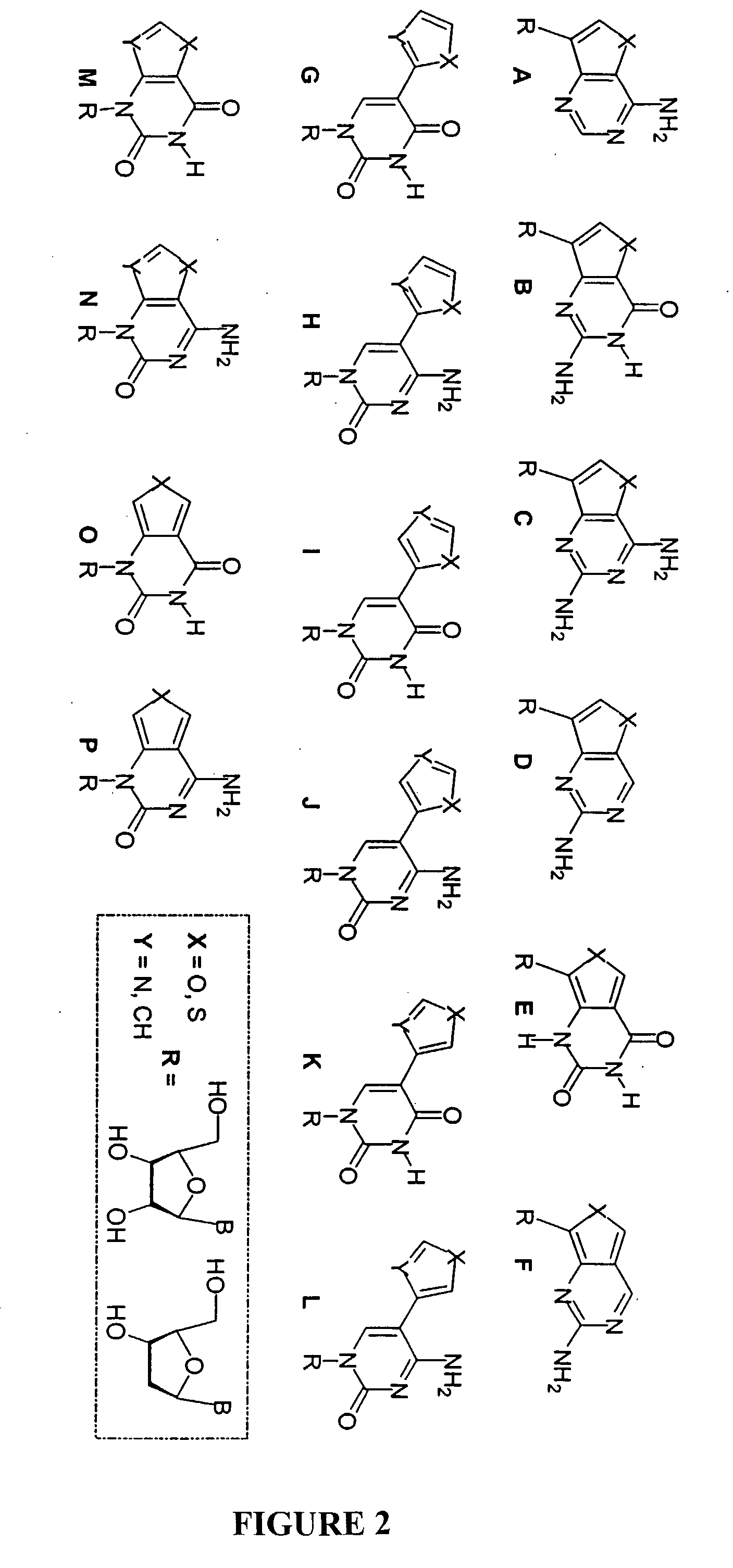Fluorescent Nucleoside Analogs That Mimic Naturally Occurring Nucleosides
- Summary
- Abstract
- Description
- Claims
- Application Information
AI Technical Summary
Benefits of technology
Problems solved by technology
Method used
Image
Examples
example 1
[0103]The invention methods conjugate 5-membered heterocycles to pyrimidines and purines. FIG. 1 shows fluorescent nucleoside chemical structures which are possible. The fluorescent nucleosides can be divided into subgroups. For example, Group I (A-F) are furo- and thieno-purine fluorescent analogs, Group II (G-L) are 5-modified pyrimidine fluorescent analogs, and Group III (M-P) are furo-, thieno-, and oxazolo-pyrimidine fluorescent analogs. The listing of purine and pyrimidine fluorescent analogs herein is not exhaustive and other conjugated 5-membered heterocyles synthesized is well within the scope of the present invention.
[0104]FIG. 2 shows fluorescent nucleoside structures 1-7 which have been synthesized and evaluated for their photophysical properties, including their absorption and emission spectrum. Fluorescent nucleoside structures 1-7 fluoresce and show a shift towards the red wavelength spectrum and their emission spectrum is also in a long emission wavelength. For examp...
example 2
[0105]There are several methods for synthesizing fluorescent nucleoside structures of the invention. For example, fluorescent nucleoside structures 14 are prepared from halogenated pyrimidines via cross-coupling reactions. FIG. 3 shows at least two examples of fluorescent nucleoside synthesis. In one synthetic reaction, a modified N-nucleoside pyrimidine analog (e.g., structure 7) is synthesized using standard N-glycosylation. In another method, C-glycosides (e.g., structure 6) are synthesized by a cross coupling reaction using glycals and brominated heterocycles. The synthesis of structure 6 and 7 require starting material structure 8. Structure 8 is synthesized by standard transformation from simple heterocyclic precursors as shown in FIGS. 1 and 2.
example 3
[0106]The fluorescent nucleoside analogs (1-7) as shown in FIG. 2 show steady state absorption and emission spectra. Table I summarizes the key photophysical parameters of select nucleosides.
TABLE IAbsorption and Emission Spectra for Modified Nucleosides in WaterNucleosideAbsorption maxima (nm)Emission maxima (nm)ΦF1250, 3164310.032262, 32043332984124262, 31841352863390.016266, 2943377268, 2933500.02
[0107]Individual absorption and emission wavelengths of fluorescent nucleoside analogs 1-7 are shown in Table I. For fluorescent nucleoside analogs 1-7, the absorption spectra range is from about 250 to about 320 nm; and the emission spectra range is from about 337 to about 433 nm. The absorption and emission spectra varies depending on various properties, including the chemical structures, for example, the R group.
[0108]For some fluorescent nucleoside analogs, time resolved experiments are performed to determine the excited state lifetime of the chromophore. For example, fluorescent nuc...
PUM
| Property | Measurement | Unit |
|---|---|---|
| Nanoscale particle size | aaaaa | aaaaa |
| Nanoscale particle size | aaaaa | aaaaa |
| Nanoscale particle size | aaaaa | aaaaa |
Abstract
Description
Claims
Application Information
 Login to View More
Login to View More - R&D
- Intellectual Property
- Life Sciences
- Materials
- Tech Scout
- Unparalleled Data Quality
- Higher Quality Content
- 60% Fewer Hallucinations
Browse by: Latest US Patents, China's latest patents, Technical Efficacy Thesaurus, Application Domain, Technology Topic, Popular Technical Reports.
© 2025 PatSnap. All rights reserved.Legal|Privacy policy|Modern Slavery Act Transparency Statement|Sitemap|About US| Contact US: help@patsnap.com



